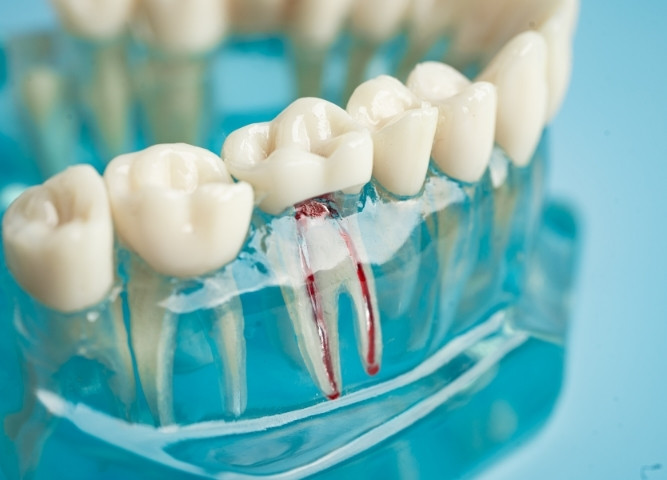Root Canal Treatment: What to Expect and How It Saves Your Tooth

A root canal is one of the finest ways to preserve your natural tooth without undergoing any extraction. If you have a seriously infected tooth, you can go for root canal therapy. With this, you will get relief from the pain, kill the infection inside your tooth and also save its natural function.
With modern dentistry, the overall process of root canals has become quite comfortable and successful now. When you know how the process works and how can a root canal save your tooth, you become confident in the procedure.
Read the blog to know more about this process.
A root canal treats infections or injuries inside a tooth. Every tooth contains a soft tissue called the pulp, which holds nerves and blood vessels. When deep decay, trauma, or cracks let bacteria reach the pulp, it becomes inflamed or infected, causing intense pain and swelling.
In this situation, you can go for a root canal rather than extracting the whole tooth. Let’s understand how the entire process works.
Step-by-Step Process of a Root Canal
When you have detailed knowledge of the root canal treatment in Eldersburg, you can relax and get done with the treatment at the earliest.
- Diagnosis and X-rays – The dentist assesses your tooth, takes X-rays, and determines the severity of the infection or damage.
- Numbing the Tooth – Local anesthetic makes the procedure painless. After numbing the area, the dentist covers the tooth with a small protective sheet (dental dam) to prevent it from getting wet.
- Draining the Infected Pulp – The dentist makes a small access hole in the crown of the tooth to reach and drain the infected or damaged pulp.
- Cleaning and Disinfection – After draining, the dentist cleans the pulp chamber and disinfects it to remove bacteria and avoid any chances of infection again.
- Sealing the Root Canals – The cleaned-out canals are then filled with a unique material called gutta-percha to close the space.
- Tooth Restoration – A temporary or final filling is done. In most cases, the dentist adds a crown to re-establish the strength and function of your tooth.
How a Root Canal Saves Your Tooth?
Most people think a tooth must be pulled if it is severely infected. However, a root canal can alter the whole scenario. How? Continue reading.
- Removing a tooth can possibly lead to shifting of other teeth and misalignment of the bite. You can save your tooth and avoid such complications with root canal therapy.
- With a root canal, the dentist eliminates the source of the infection before it gets the chance to spread any further.
- A completely restored tooth behaves exactly like a natural tooth and ensures you can continue eating and speaking naturally and comfortably.
- A root canal also saves your jawbone and prevents possible bone loss that results after tooth extraction.
Recovery and Aftercare Tips
A few days of mild sensitivity or discomfort after a root canal is normal. You can aid the healing with over-the-counter pain medication and proper oral hygiene. You should avoid chewing on the treated tooth until it is completely restored with a crown. Regular checkups and cleanings at the dentist will keep the treated tooth healthy and strong for years to come.
A root canal is more than just a treatment—it’s a way to save your natural tooth, eliminate pain, and protect your oral health. While the thought of the procedure may seem daunting, advancements in dental care have made it a smooth and effective process. If you’re experiencing tooth pain or suspect an infection, don’t delay treatment. A root canal may be the solution to keeping your smile and avoiding more significant dental problems in the future.